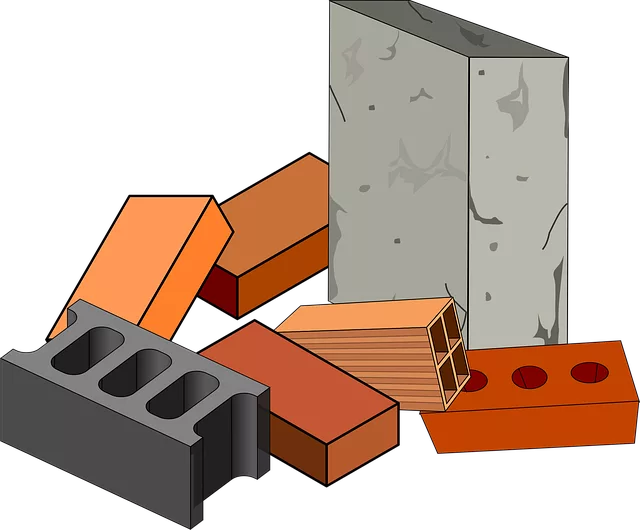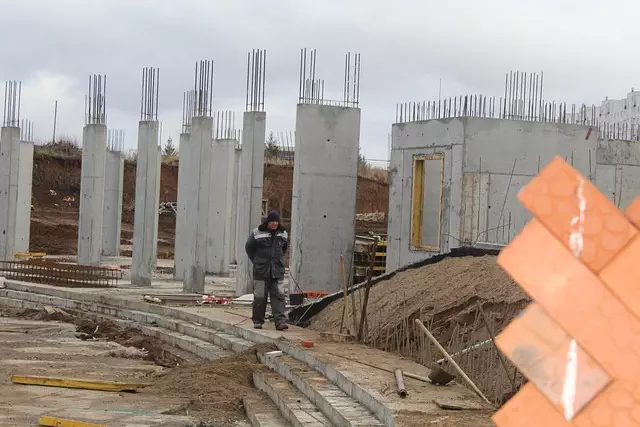Slab foundations require regular maintenance and understanding of repair basics by homeowners. Issues like cracks, uneven settling, and structural problems can arise due to ground movement, soil conditions, heavy loads, or poor drainage. Early signs include visible cracks, uneven doors/windows, and distorted floors. Cost-effective repair methods balance quality and affordability, addressing root causes with techniques like underpinning, piering, and slab jacking. Non-invasive technologies like polymer injectors and structural jackets stabilize minor cracks without disturbing the home's integrity. Affordable services provide competitive pricing, guarantees, and flexible payment options for peace of mind. Proactive steps like drainage system inspection and waterproof membranes prevent future issues, extending slab lifespans. Modern techniques have revitalized homes with effective, affordable solutions, ensuring strong foundations for property value.
“Discover affordable solutions for your slab foundation concerns! This comprehensive guide unravels the basics of residential foundation repair, focusing on budget-friendly options. Learn about common causes of slab damage and how to identify early signs of trouble. We explore non-invasive repair methods, highlighting their benefits, and provide a step-by-step process for successful restoration.
From long-term prevention strategies to real-world success stories, this article offers valuable insights into cost-effective residential foundation repair, ensuring your home’s structural integrity without breaking the bank.”
Understanding Slab Foundations: The Basics for Homeowners

Slab foundations are a fundamental component of many residential structures, providing stability and support for the entire building. For homeowners, understanding the basics of slab foundation repair is crucial to addressing potential issues early on. A typical slab foundation consists of reinforced concrete poured into a prepared hole, often with rebar (reinforcing steel) embedded to enhance strength and durability. Over time, various factors can impact this solid base, leading to cracks, uneven settling, or other structural problems that require attention.
Regular inspection is key for identifying potential issues. Homeowners should look out for signs like cracks in the slab, doors or windows that stick or swell, and uneven floors. If any of these symptoms are observed, it’s important not to delay; prompt action can often prevent more severe and costly repairs down the line. Residential foundation repair techniques vary based on the specific problem, ranging from non-invasive methods like carbon fiber wraps for small cracks to more extensive solutions such as piering or slab jacking for significant settling issues.
Common Causes of Slab Foundation Damage

Slab foundation damage is a common issue that many homeowners face, often requiring residential foundation repair services. Several factors contribute to this problem, and understanding these causes can help property owners take preventive measures. One of the primary reasons for slab damage is ground movement, which can be triggered by various factors such as expansive clay soils, tree root intrusion, or changes in water levels. These movements can cause cracks in the concrete slab, leading to uneven floors and structural instability.
Another prevalent cause is settlement issues, where the soil beneath the foundation compacts or shifts over time. This phenomenon occurs due to heavy loads on the structure, poor soil conditions, or inadequate drainage. Settling may result in gaps between the walls and floors, floor bulges, or cracks, necessitating professional residential foundation repair interventions to stabilize the slab and prevent further deterioration.
Identifying Signs of Slab Foundation Problems

Recognizing the early signs of slab foundation problems is crucial for effective and affordable residential foundation repair. One of the most common indicators is visible cracks in the walls or floors, which can be both vertical and horizontal. These cracks often appear as thin lines or may even look like stair-step patterns, indicating that your slab foundation might be settling unevenly. Another subtle signal is doors or windows that stick or do not close properly. This could suggest that the foundation is shifting, causing structural distortions in your home.
Additionally, uneven floors or floors with dips and bumps can point to foundation issues. You might also notice bubbles or ripples forming on newly painted surfaces, or walls that are not straight but have noticeable bulges. If you live in an older home, water stains on the ceiling or walls, especially near corners or joints, could be a sign of long-term foundation problems. Promptly addressing these signs can prevent more severe and costly damage to your home’s structure and ensure affordable slab foundation repair over time.
The Cost-Effective Approach to Residential Foundation Repair

When it comes to residential foundation repair, affordability should never compromise quality. Fortunately, there’s a cost-effective approach that offers both. This method focuses on identifying and addressing the root causes of foundation issues rather than merely covering them up. By employing techniques such as underpinning, piering, or slab jacking, homeowners can stabilize their foundations at a fraction of the cost traditional methods command.
These innovative solutions not only provide immediate structural support but also prevent future damage by maintaining the integrity of the foundation. Moreover, this approach is tailored to each property’s unique needs, ensuring that repairs are both effective and economical. As such, it represents an ideal balance between affordability and long-lasting results for residential foundation repair.
Non-Invasive Methods for Slab Foundation Repair

Non-invasive methods have emerged as a preferred choice for residential foundation repair, offering cost-effective solutions without disrupting the structural integrity or aesthetics of homes. These techniques are particularly useful for addressing minor cracks and settlement issues that may compromise the stability of a slab foundation. One such method involves the use of polymeric injectors, which inject a high-viscosity material into the crack to fill and stabilize it from the inside out. This process is swift and efficient, requiring minimal excavation or disruption to the property.
Another innovative approach is the use of structural jackets or wraps, which are tightly wrapped around the foundation to provide additional support. These jackets are typically made from durable materials like fiberglass or carbon fiber and are secured with strong adhesives. By reinforcing the slab from the exterior, this method effectively reduces further movement and settlement, ensuring long-lasting stability for the residential foundation repair.
Benefits of Choosing Affordable Foundation Repair Services

Choosing affordable slab foundation repair services offers numerous benefits for homeowners, especially those on a budget. Cost-effectiveness is a primary advantage; many professional repair companies provide competitive pricing and flexible payment options, making essential repairs accessible without straining your finances. This accessibility ensures that you can maintain the structural integrity of your home without breaking the bank.
Additionally, these services often come with guarantees, ensuring long-lasting results and peace of mind. Skilled technicians employ advanced methods and materials to repair cracks, settle uneven floors, and stabilize slabs, addressing the root causes of foundation issues. Prompt action through affordable residential foundation repair can prevent more severe and costly problems in the future, such as structural damage, water intrusion, and reduced home value.
Step-by-Step Process: How to Fix a Damaged Slab Foundation

Repairing a damaged slab foundation involves several key steps, ensuring a strong and stable home base. First, inspect the slab for cracks or uneven areas using a level and flashlight. Once identified, determine the severity of the damage – minor cracks can often be fixed with epoxies, while larger issues might require more extensive methods.
Next, prepare the area by cleaning and degreasing the surface to ensure proper adhesion. For smaller repairs, inject epoxy into the crack using a syringe or pump, filling it completely. Let the epoxy cure according to manufacturer instructions before proceeding. For larger damages, consider jacking up the slab and installing support beams or replacing damaged sections with new concrete. After repairing, thoroughly clean the area and ensure all materials are properly disposed of, following local regulations for residential foundation repair.
Long-Term Solutions for Preventing Future Foundation Issues

Investing in long-term solutions for residential foundation repair is crucial to prevent future issues. One effective strategy involves addressing drainage problems around your home. Proper drainage ensures that water does not pool near your foundation, reducing the risk of moisture intrusion and subsequent damage. Regularly inspecting and clearing drainage systems, such as gutters and downspouts, can make a significant difference.
Additionally, applying a waterproof membrane or coating to the exterior of the foundation walls is another proactive step. These barriers create an extra layer of protection against water seepage, which can cause cracks and other structural problems over time. By combining these measures with regular maintenance checks, homeowners can significantly extend the lifespan of their slabs and avoid costly repairs in the future.
Real-World Success Stories: Affordably Restored Slab Foundations

In the realm of residential foundation repair, where affordability meets durability, countless homes have been revitalized, ensuring a sturdy and stable future. These success stories highlight the effectiveness of modern techniques in addressing slab foundation issues without breaking the bank. From cracked concrete to uneven floors, homeowners have found relief through innovative solutions tailored to their unique challenges.
One such example involves a family home in a suburban area where settling cracks had caused significant damage. The repair process began with a comprehensive evaluation, followed by a targeted approach using advanced polymer injections to stabilize and strengthen the slab. This method not only corrected the structural problem but also offered a cost-effective alternative to traditional foundation replacement. Now, the home stands as a testament to affordable slab foundation repair, where a troubled foundation has been transformed into a solid investment in the property’s long-term value.
